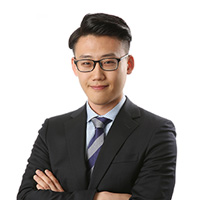[Herald Design Forum 2018] ‘Space composer’ highlights context in spatial design
By Son Ji-hyoungPublished : Sept. 14, 2018 - 17:21
With the arrival of the 21st century, innovation has increased connectivity among people to an unprecedented level, redefining communication.
Speaking at the Herald Design Forum 2018 at Dongdaemun Design Plaza in Seoul on Friday, Junji Tanigawa, a Japanese spatial designer, entrepreneur and author of “The Space Composer” stressed the role of a spatial designer in the new era as a context provider who helps visitors memorize a space and fulfills expectations that people have about the space.
Speaking at the Herald Design Forum 2018 at Dongdaemun Design Plaza in Seoul on Friday, Junji Tanigawa, a Japanese spatial designer, entrepreneur and author of “The Space Composer” stressed the role of a spatial designer in the new era as a context provider who helps visitors memorize a space and fulfills expectations that people have about the space.

Sharing his methodology in spatial design, the 53-year-old Tanigawa, who is also chief executive at Japanese space creation consulting firm JTQ, said hyperconnectivity in the 21st century inspired him to take a new approach.
“In the past, (communication) used to be made unilaterally,” he said. “(But in the 21st century), information is shared once the target of the information becomes the sender of the information,” he said.
This shift came about as people began to prioritize context rather than content when sharing values and information, compared to the end of the 20th century when people focused on content, he said.
“Various memories take root to create new expectations,” he said. “Such a cycle keeps going and makes our lives more satisfying.”
He added that thus was in tune with JTQ’s culture-oriented approach, allowing visitors to create new expectations based on their memories in a certain space.
“When we put culture at the center, then we place more value on personality,” he said. “It means a collection of lifestyles. We try to focus on small-scale communities where people’s souls are connected, which leads to diversity.”
This methodology gave birth to various content expositions, which offer experience of Japan to visitors, ranging from perfumery organs, virtual reality goggles to Tokyo night driving experiences, as well as various talks and workshops.
This approach also inspired his works, including an annual art showcase called Media Ambition Tokyo, a form of spatial art that offers real-life experiences in urban city settings.
By Son Ji-hyoung
(consnow@heraldcorp.com)
“In the past, (communication) used to be made unilaterally,” he said. “(But in the 21st century), information is shared once the target of the information becomes the sender of the information,” he said.
This shift came about as people began to prioritize context rather than content when sharing values and information, compared to the end of the 20th century when people focused on content, he said.
“Various memories take root to create new expectations,” he said. “Such a cycle keeps going and makes our lives more satisfying.”
He added that thus was in tune with JTQ’s culture-oriented approach, allowing visitors to create new expectations based on their memories in a certain space.
“When we put culture at the center, then we place more value on personality,” he said. “It means a collection of lifestyles. We try to focus on small-scale communities where people’s souls are connected, which leads to diversity.”
This methodology gave birth to various content expositions, which offer experience of Japan to visitors, ranging from perfumery organs, virtual reality goggles to Tokyo night driving experiences, as well as various talks and workshops.
This approach also inspired his works, including an annual art showcase called Media Ambition Tokyo, a form of spatial art that offers real-life experiences in urban city settings.
By Son Ji-hyoung
(consnow@heraldcorp.com)


















